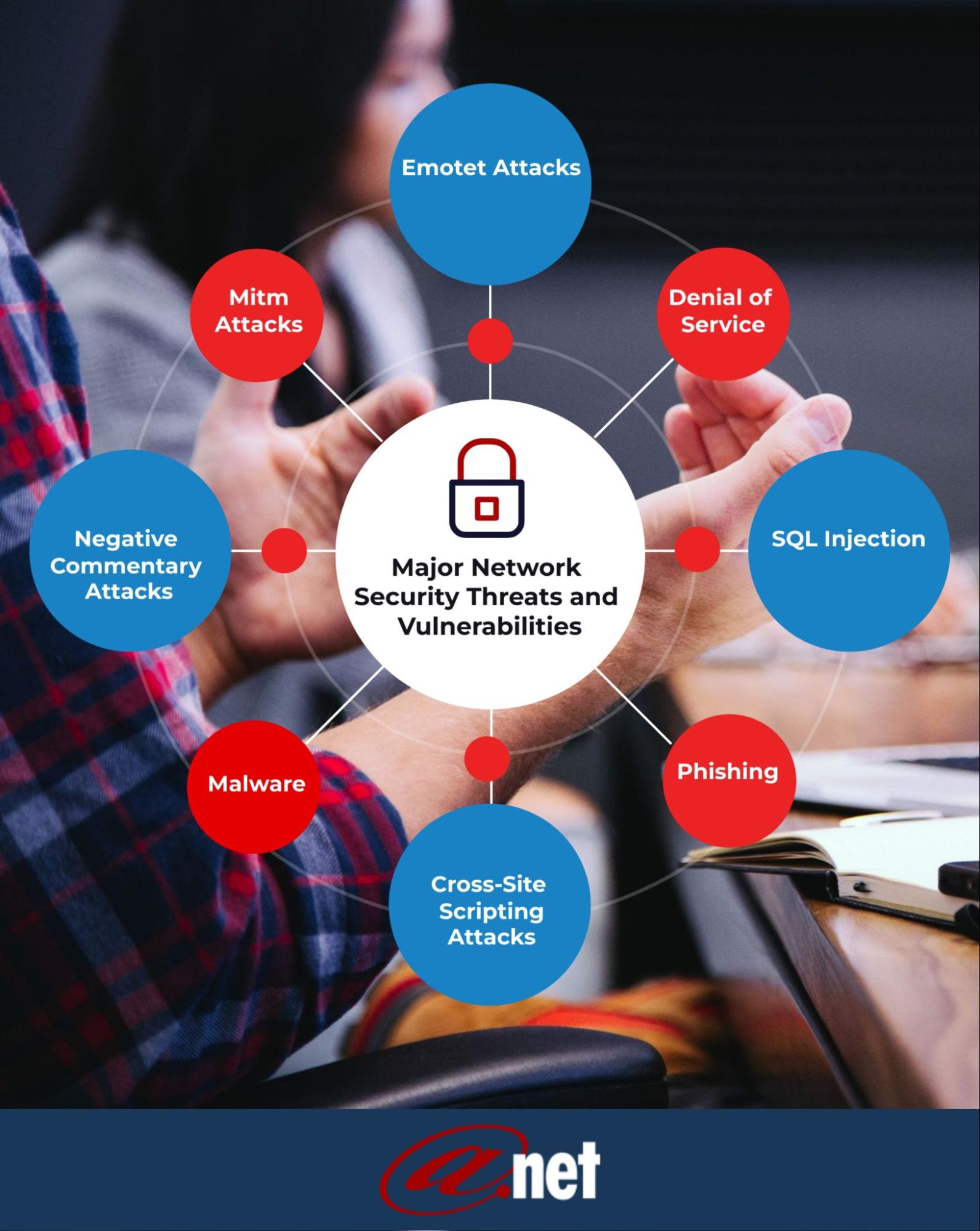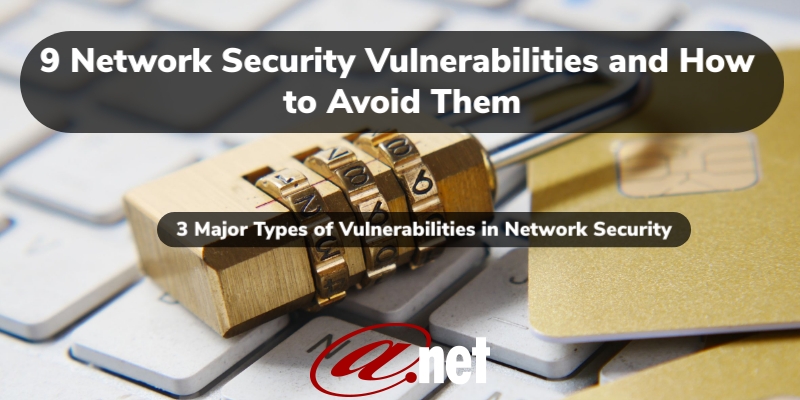The internet has opened up a world of possibilities for businesses, connecting companies to customers and employees all over the globe. But with these opportunities come risks – network security vulnerabilities that can compromise sensitive information and put your business at risk.
With data breaches peaking at a 17-year high, now averaging $4.35 million in costs, protecting uptime, data, and users are more important than ever.
In this article, we’ll look at some of the most common network security vulnerabilities facing businesses, the three main types of cyber security vulnerabilities, and some tips on how to protect against them.
With this in mind, let’s get started.
What are Network Security Vulnerabilities?
Network security vulnerabilities are weaknesses in your network that can be used by attackers to gain unauthorized access. These vulnerabilities can come in many forms, including software vulnerability, unpatched software systems, poor physical security measures, and more.
There are three common types of vulnerabilities in network security, which include:
- Technical Weaknesses – Technical vulnerabilities include things like weak passwords, outdated software with known security flaws, and a misconfigured operating system or computer networks.
- Process Weaknesses – Process-related vulnerabilities include things like lack of proper training for employees or inadequate incident response processes.
- Human Weaknesses – Human-related weaknesses include social engineering attacks that manipulate employees into revealing sensitive information or opening malicious files.
It’s important to always be aware of the cyber threats and vulnerabilities in your network, and to take steps to protect against them. This can include conducting regular security assessments of your systems, implementing strong password policies for employees, training staff on best practices for information security, and more.
Is Your Network Secure From Cyber Attacks?Discover the seven strategic ways businesses are improving their data security measures. |
At the end of the day, network security threats are a fact of life in today’s digital world. But with the right tools and strategies in place, you can protect your business from these security risks and keep sensitive data safe.
Three additional types of attacks in network security to know are:
- SQL injection
- Password attacks
- Social engineering
9 Major Network Vulnerabilities to Know
As one of the biggest threats facing businesses today, network security threats require careful attention and constant vigilance. Among the core network information security vulnerabilities to know include:
1. Malware
Malicious software such as viruses, spyware, and trojans are one of the biggest threats facing modern networks. These programs can wreak havoc on your systems by:
- Stealing data
- Corrupting or deleting files
- Taking control of your network.
To protect against malware and prevent anyone from being able to steal data, it’s important to keep your systems and software up-to-date with the latest security patches, conduct routine penetration tests, and to use anti-virus and anti-spyware software on your network.
Additionally, be careful about opening suspicious emails or clicking on links from unknown sources, as these are common vectors for introducing malware onto your computer, mobile device, and Wi-Fi network.
2. Phishing Attacks
Phishing attacks involve tricking your employees into revealing sensitive information such as login credentials or credit card details by sending them fraudulent emails that appear legitimate.
These attacks can have serious consequences for businesses – not only can they compromise sensitive data, but in some cases, they can even allow attackers to take control of your network.
To protect against phishing attacks, you should ensure your employees are trained to recognize potential scams and never give out sensitive information.
In addition, it’s also important to use multi-factor authentication techniques like passwords or one-time codes to ensure that only authorized users gain access to your network.
3. Brute Force Attacks
Brute force attacks involve many automated attempts to guess login credentials for your systems or networks.
These attacks often focus on guessing default usernames and passwords – which many businesses still use today – making them especially dangerous for organizations that have not implemented strong password policies.
To protect against brute force attacks, it’s important to ensure that all of your systems and networks use strong, unique passwords.
Additionally, you should consider implementing multi-factor authentication techniques like one-time codes or two-factor authentication to further protect your systems from unauthorized access.
4. Distributed Denial of Service (DDoS) Attacks
Distributed denial of service (DDoS) accounts for over 40% of hacking attempts, with attacks flooding a network with more traffic than it can handle, overloading its bandwidth, and causing it to become inaccessible for legitimate users.
These attacks are often launched by organized cybercrime groups, and can be extremely difficult to detect and mitigate without the help of specialized tools and security professionals.
To protect against DDoS attacks, businesses should implement firewalls specifically designed for detecting these types of threats.

5. Man-in-the-Middle Attacks
A man-in-the-middle attack involves using tools like packet sniffers, which allow an attacker to intercept data transmitted over a network.
These attacks are particularly insidious because they can bypass many types of security controls, allowing attackers to eavesdrop on communications or even alter sensitive data before it reaches its intended recipient.
To protect against man-in-the-middle attacks, businesses should deploy encryption technologies that prevent unauthorized access and ensure that their security controls are always up to date.
6. Data Breaches
Data breaches occur when unauthorized users steal or leak sensitive business data.
These attacks can have serious consequences – not only do they damage your brand reputation and put you at risk of legal action, but they can also expose your customers’ personal information, putting them at risk as well.
To protect against data breaches, businesses should employ a range of measures including: multi-factor authentication techniques like passwords or one-time codes to ensure that only authorized users can access their network.
Additionally, keeping your systems and networks up-to-date is important by regularly patching vulnerabilities and updating software as new threats emerge.
7. Server Misconfiguration Attacks
Server misconfiguration attacks occur when a server is unintentionally left vulnerable to attack because its settings have been poorly configured.
These attacks are often launched by automated tools that scan the internet looking for these types of issues, so it’s crucial to ensure that all of your servers are properly set up and protected with appropriate security controls.
To protect against server misconfiguration attacks, businesses should carefully audit the settings of all critical systems to ensure they meet security standards as well as performing vulnerability scanning. They should also work closely with an MSSP who can provide expert advice and help implement proactive solutions like firewalls or intrusion detection systems to detect and prevent attacks.
8. Insider Threats
Insider threats occur when an employee or trusted third party with legitimate access to your network uses that access to compromise your systems or steal sensitive data.
These attacks are often quite difficult to detect, making them particularly dangerous – it can be weeks before you even become aware that someone has accessed your systems using a valid account.
To protect against insider threats, businesses should put in place strict policies governing the use of their networks and enforce these policies consistently to ensure compliance.
Additionally, they should regularly conduct security audits to ensure that their critical systems and networks are protected from potential vulnerabilities by employing effective security controls like multi-factor authentication techniques.
9. Denial of Service Attacks
Denial of service (DoS) attacks involve flooding a targeted system with traffic to overwhelm its resources and render it inaccessible to others. These types of network security threats are particularly dangerous because they can shut down business-critical systems, preventing critical services like email or payment platforms from working effectively.
To protect against these common network vulnerabilities, businesses should invest in high-quality security solutions that can mitigate the effects of DoS attacks – for example, by prioritizing legitimate traffic over malicious requests so that your business isn’t impacted if an attack is detected.
Additionally, businesses should work closely with an MSSP who can proactively monitor for potential threats and educate their teams about ways to prevent DoS attacks from occurring in the first place.
For more relevant information, visit our blogs:
|
Identify and Remediate Cyber Vulnerabilities with AT-Net
In today’s digital world, networks are essential for businesses to function effectively – but that also means they’re vulnerable to a host of risks like data breaches and server misconfiguration attacks. By understanding your network’s vulnerabilities and implementing effective security controls, you can ensure that your business stays safe from these common dangers.
By working with AT-NET, you can identify and remediate information security vulnerabilities before impact. With more than 23 years of business experience and more than 300 industry certifications, you won’t find a more qualified MSP to protect your business.
Best of all, our services are backed with an average response time of fewer than 60 seconds, and we offer a 99.999% uptime guarantee for all our clients.
For more information on how we can help you, connect with us today.





